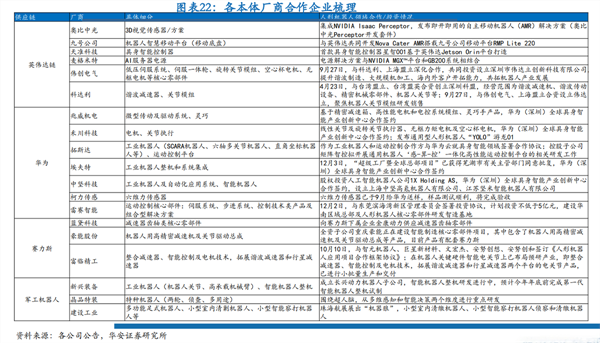The Dawn of the Future: An In-Depth Analysis of the Humanoid Robot Industry Chain (with Concept Stocks)
![]() 01/14 2025
01/14 2025
![]() 664
664
On Wednesday, the "Tesla Owners Silicon Valley" group shared on social platform X that Musk, in an online interview, proclaimed Tesla's humanoid robot Optimus as the company's most ambitious product to date. This revelation carries significant implications for the entire humanoid robot industry, prompting a detailed analysis in this article.
01. The Dawn of a New Era?
Musk painted an exhilarating picture of the future trajectory of humanoid robots. He envisages a tenfold increase in their numbers over the next three years, with a projected count of thousands in 2025, surging to 50,000-100,000 by 2026, and potentially exceeding half a million to one million by 2027. These figures and timelines have injected a surge of confidence into the market.
Previously, speculations about the production volume of Tesla's humanoid robots were vague and unverifiable. However, Musk's clear numbers and timelines have undoubtedly bolstered market confidence and expectations in this sphere.
Regarding the market potential of humanoid robots, some preliminary estimates can be drawn. Assuming a price point of $500,000 per unit in 2025, $400,000 in 2026, and $300,000 in 2027, the market size for humanoid robots could reach $2.5 billion in 2025, soaring to $20-40 billion by 2026, and potentially hitting $150-300 billion by 2027. These estimates, though based on certain assumptions, underscore the enormous potential of the humanoid robot market.
Beyond Tesla, giants like Huawei and BYD are also actively engaging in the humanoid robot arena. Their involvement is poised to further propel the growth of this market, suggesting a diversified competitive landscape rather than a Tesla-dominated future.
Moreover, humanoid robots represent one of the most promising applications for artificial intelligence. The enthusiastic participation of industry heavyweights such as Tesla, NVIDIA, Huawei, BYD, and ByteDance underscores this trend. These trillion-dollar companies' strategic moves undoubtedly point to the future direction of technological advancement.
The first half of 2025 promises a flurry of significant developments. Tesla's 2024 annual report could unveil news about the solidification of robot solutions and the establishment of an initial supply chain. Huawei's Jimu Robot will undergo a new version iteration, while NVIDIA anticipates releasing new products or technologies in March. These catalysts will further propel the growth of the humanoid robot market, making it a field ripe with opportunities and challenges for investors.
02. Decoding the Humanoid Robot Industry Chain
The humanoid robot industry chain is garnering widespread attention, with high-value components particularly captivating institutional investors. Dexterous hands, crucial for precise robot operation, are governed by advanced technology that directly influences the robot's capabilities and applications. The driving and transmission technology at the heart of these hands determines their efficacy, with the choice of driving source impacting their size and weight. Currently, motor drive, pneumatic drive, hydraulic drive, and shape memory alloy drive are the mainstream methods, each suited to different scenarios.
In terms of transmission, the stability and flexibility of dexterous hands hinge on the transmission mode. Linkage, tendon, and gear transmissions are common methods, each with unique characteristics and application advantages. Tesla has innovated in this area, adopting a structure that combines coreless motors with planetary gearboxes, encoders, drivers, and sensors. Additionally, it employs a combination of metal tendons and worm gear transmission for efficient and stable operation.
For motor solutions, dexterous hands employ various approaches, with coreless motors favored for their lightweight and efficient nature. However, to boost torque, coreless motors are often paired with planetary gear reducers. Frameless torque motors and brushless slotted motors are also prevalent in dexterous hand modules, each offering distinct performance and application benefits.
Beyond motors, dexterous hand modules encompass other critical components like reducers and sensors. The selection and design of these components significantly impact the hands' performance. Harmonic and planetary reducers, for instance, provide stable reduction and transmission effects. Force and tactile sensors enable the hands to perceive external interaction forces, enhancing the robot's operational precision.
In the robot industry chain, PEEK (polyetheretherketone), a high-performance, high-value engineering plastic, exhibits vast application potential. PEEK boasts rigidity, toughness, corrosion resistance, impact resistance, heat resistance, and wear resistance, further enhanced by carbon fiber modification for increased mechanical strength and friction resistance. This makes PEEK ideal for lightweight robot design, suitable for robotic arm components and joint linkages.
In the realm of humanoid robots, PEEK material finds extensive application. PEEK gears and bearings can be employed in robot joints, offering stable transmission and support. Their exceptional wear resistance and self-lubricating properties minimize friction and wear, extending the robot's lifespan. Additionally, PEEK skeletons can be used in the torso and limbs, significantly reducing weight compared to metallic materials while maintaining sufficient strength and rigidity for load-bearing and flexibility requirements.
As the humanoid robot market thrives, new entrants are flooding into the industry. Numerous manufacturers are deploying in this field and collaborating with industry leaders. For instance, Orbbec, Segway, and Tianzhun Technology in NVIDIA's ecosystem are developing products like 3D vision sensors, robotic smart mobile platforms, and embodied intelligent controllers. Huawei has also inked cooperation agreements with Zhaowei, Hechuan Technology, and Topstar to advance embodied intelligence.
Furthermore, traditional industrial robots and automation enterprises are venturing into the humanoid robot sphere. Companies like Efort, Zhongjian Technology, Keli Sensor, and Leisai Intelligence are actively researching and producing core components and complete machines for humanoid robots. Simultaneously, emerging equipment enterprises such as Xinxing Equipment and Jingpin Special Equipment have made substantial progress in smart robot complete machine R&D.
Notably, manufacturers like Landai Technology, Haoneng, and Fulin Precision Industry are providing core components like reducer gear shafts, high-precision reducers, and joint drive assemblies for humanoid robots. Military robot enterprises, including Xinxing Equipment, are also researching smart robot complete machines, with plans to complete the trial production of first-generation products in the near future.









